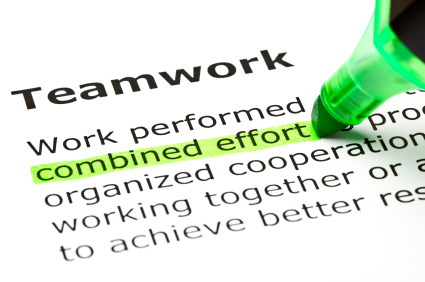Great teams don’t just happen. They are built. Over the past 15 years, I’ve had the opportunity to serve on teams, lead teams, and facilitate dozens of team building meetings. I’ve observed and studied what helps teams grow together and increase cohesion and trust. Below, I discuss 5 ways managers can move a team toward greater health and effectiveness. 
1) Help your team make personal connections. You can build camaraderie and trust by helping team members get to know each others’ likes, dislikes, hobbies, and passions. This isn’t necessarily getting together outside of work hours, but it could be one strategy. You can accomplish this through team building activities, meeting ice-breakers, off-site meetings, and celebrations. An excellent resource for team activities and ice-breakers is www.teampedia.com. You can find many team building activities and ice breakers perfect for meeting openers.
2) Help each person understand the communication and work preferences of each team member. We have all experienced working with people that we don’t understand or perhaps even dislike. Through a collaborative process of exploring communication, conflict, and thinking styles team members can better understand themselves and the people around them. This empowers each member to be more flexible in their style and become more patient with the preferences of others. You’ll want to find a qualified facilitator to help with this process and also utilize a credible assessment like the Myers-Briggs Type Indicator (MBTI), Herrmann Brain Dominance Instrument (HBDI), or the DiSC Profile. As a free option, go to www.keirsey.com/sorter/instruments2.aspx?partid=0 where you and members of your team can take the Keirsey Temperament Sorter – II, print results and search the website for type information.
3) Engage your team in creating and monitoring the team’s strategy and goals. Arrange special meetings at least twice a year, but preferably quarterly, to allow the team to discuss key strategic issues, create goals, and monitor the progress of previously set goals. This allows you to communicate the team’s key priorities and help each person become a part of the plan.
4) Deal with problem people. If you have someone on your team that is distracting the team from working together well and reaching your team goals, they must be dealt with quickly. The distraction could be anything from not getting along with others to performing poorly. Utilize the 3 principles above along with corrective coaching to give the person a chance to become a productive part of the team. If you sense the person doesn’t have the capability or willingness to change, then look to manage him/her off the team as soon as possible. Team members will respect you for acting swiftly and dealing with the issue.
5) Anchor high standards through reinforcement. The first 4 principles above will help create an environment of mutual respect and high performance standards. You can keep the flywheel spinning by continually coaching, appreciating, rewarding, and recognizing individual and team behaviors that support team success.
Successful managers develop and execute a plan to build their team in a way that creates and sustains high standards of behavior and performance. These behaviors lay the foundation for unleashing individual and team capabilities.
What are you doing currently to build your team?
